
|
|
Human with feline head
Mammoth ivory ca. 30,000-28,000 BCE *Sex is greatly debated, divinity? mask? like the Egyptian Neubus
-One of the earliest sculptures discovered yet is an extraordinary ivory statuette, which may date back as far as 30,000 BCE. It was found in fragments inside a cave at Hohlenstein-Stadel in Germany and has been meticulously restored. Carved out of mammoth ivory and nearly foot tall-a truly huge image for its era- the statuette represents something that existed only in the vivid imagination of the unknown sculptor who conceived it. It is a human bodies (and vice versa) were common in the art of the ancient Near East and Egypt. In those civilizations, surviving texts usually allow historians to name the figures and describe their role in contemporary religion and mythology. But since we got nutin, we gotta guess. The animal headed humans of Paleolithic art sometimes have been called sorcerers and described as magicians wearing masks. Similarly, Paleolithic human-headed animals have been interpreted as humans dressed up as animals. To make this statue, it probably took a good several days of skilled work |

|
|
Nude woman (Venus of Willendorf) Limestone ca. 28,000-25,000 BCE *Found in Austria. breasts, stomach, pubic area was emphasized. More of a depiction rather than portrait. Prehistoric ideal woman -In the earliest art, humankind consists almost exclusively of women as opposed to men, and the painters andsculptors almost invariably showed them nude, although scholars generally assume that during the Ice Age both women and men wore garments covering parts of their bodies. When archaeologists first discovered Paleolithic statuettes of women, they dubbed them “Venuses” after the Greco-Roman goddess of beauty and love, whom artists usually depicted nude. The nickname is inappropriate and misleading. It is doubtful that the Old Stone Age figurines represented deities of any kind. One of the oldest and the most famous of the prehistoric female firgures is the tiny limestone figurine of a woman that long has been known as the Venus of Willendorf after its find spot in Austria. Its cluster of almost ball-like shapes is unusual, the result in part of the sculptor’s response to the natural shape of the stone selected for carving. The anatomical exaggeration has suggested to many that this and similar statuettes served as fertility images. But other Paleolithic stone women of far more slender proportions exists, and the meaning of these images is as elusive as everything else about the Paleolithic art. Yet the preponderance of female over male figures in the Old Stone Age seems to indicate a preoccupation with women, whose child-bearing capabilities ensured the survival of the species. The sculptor did not aim for naturalism in shape and proportion. As with most Paleolithic figures, the sculptor did not carve any facial features. Here there carver suggested only a mass of curly hair or, as some researchers have recently argued, a hat woven from plant fibers-evidence for the art of textile manufacture at a very early date. The breast of the Willendorf women are enormous, far larger than the tiny forearms and hands that rest upon them. The carver also took pains to scratch into the stone the outline of the pubic triangle. Sculptors often omitted this detail in other early figurines, leading some scholars to question the nature of these figures as fertility images. Whatever the purpose of these statuettes, the makers intent seems to have been to represent not a specific woman but the female form. |

|
|
Woman holding a bison horn
Painted limestone relief ca. 25,000-20,000 BCE - Another artifact with fertility aspect. - Draws attention to her belly: Her ability to bear a child - No face - Meaning of Gesture & horn? -Horn: Strength? - Ex. of open air art in the Old Stone Age - Sculptor applied red ocher, a naturally colored mineral, to the body - Exaggeration of Anatomical structures and the featureless head - Arms take a greater importance/meaning than those in Venus of Wilendorf |

|
|
Two bison, reliefs
Le Tuc d’Audoubert cave, France Clay ca. 15,000-10,000 BCE - Marks of hands in the clay are visible - Each bison is about two feet long (Representations of animals are far more common than of humans in Paleolithic European Art. - Among the largest paleolithic sculptures known |

|
|
Bison, painted ceiling
Altamira cave, Spain ca. 12,000-11,000 BCE |

|
|
Hall of the Bulls Lascaux cave,
France. 15,000-13,000 BCE |
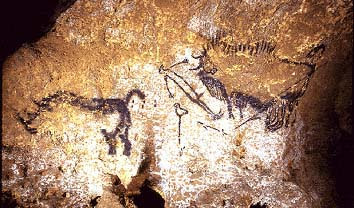
|
|
Rhinoceros, wounded man, bison
Well, Lascaux cave, France ca. 15,000-13,000 BCE |
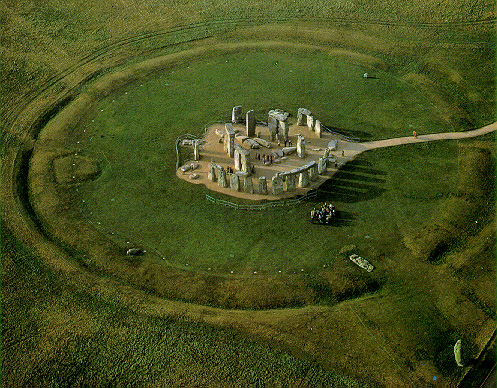
|
|
Stonehenge
Salisbury Plain, England ca. 2550-1600 BCE |
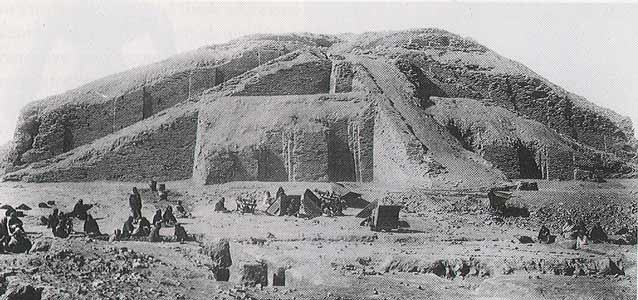
|
|
White Temple and ziggurat
Sumerian Uruk (modern Warka), Iraq ca. 3200-3000 BCE |

|
|
Female head (Inanna?)
Sumerian Uruk ca. 3200-3000 BCE |

|
|
Warka Vase
scenes of presentation of offerings to Inanna Sumerian Uruk ca. 3200-3000 BCE |

|
|
Statuettes of worshippers
Sumerian Square Temple at Tell Asmar, Iraq ca. 2700 BCE |

|
|
Standard of Ur
Sumerian Royal Cemetery, Ur, Iraq ca. 2600 BCE |

|
|
Bull-headed lyre
Sumerian Royal Cemetery, Ur ca. 2600 BCE |

|
|
Head of an Akkadian ruler
Akkadian from Nineveh (modern Kuyunjik), Iraq ca. 2250-2200 BCE |

|
|
Victory stele of Naram-Sin
Akkadian Susa, Iran 2254-2218 BCE |

|
|
Seated statue of Gudea
Neo-Sumerian Girsu (modern Telloh), Iraq ca. 2100 BCE |

|
|
Stele with law code of Hammurabi
Babylonian Susa, Iran ca. 1780 BCE |

|
|
Lamassu
Assyrian Citadel of Sargon I, Dur Sharrukin (modern Khorsabad), Iraq ca. 720 BCE-705 BCE |

|
|
Ashurbanipal hunting lions
Assyrian North Palace of Ashurbanipal, Nineveh (modern Kuyunjik), Iraq ca. 645-640 BCE |

|
|
Ishtar Gate
Neo-Babylonian Babylon, Iraq ca. 575 BCE |

|
|
Palette of King Narmer
Predynastic Period ca. 3000-2920 BCE Slate |
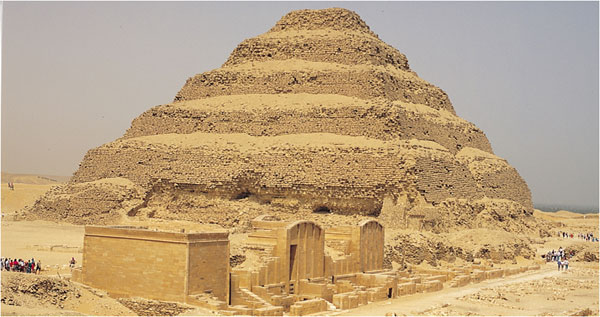
|
|
Stepped Pyramid and mortuary precinct of Djoser
architect: Imhotep Saqqara, Egypt ca. 2630-2611 BCE |

|
|
Great Pyramids
Gizeh, Egypt Menkaure: ca. 2490-2472 BCE Khafre: ca. 2520-2494 BCE Khufu: ca. 2551-2528 BCE |

|
|
Great Sphinx
Gizeh, Egypt ca. 2520-2494 BCE Sandstone |

|
|
Khafre enthroned
ca. 2520-2494 BCE Diorite |

|
|
Menkaure and Khamerernebty
ca. 2490-2472 BCE Graywacke |

|
|
Ti watching a hippopotamus hunt
from the mastaba of Ti, Saqqara, Egypt ca. 2450-2350 BCE |

|
|
Mortuary temple of Hatshepsut
architect: Senmut Deir el-Bahri, Egypt ca. 1473-1458 BCE |

|
|
Hatshepsut with Offering Jars
Red granite ca. 1473-1458 BCE |

|
|
Temple of Ramses II
Abu Simbel, Egypt ca. 1290-1224 BCE |

|
|
Temple of Amen-Re
Hypostyle hall Karnak, Egypt Begun 15th century BCE |

|
|
Akhenaton
ca. 1353-1335 BCE Sandstone |
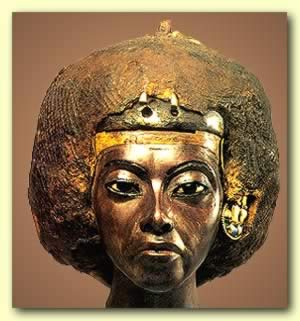
|
|
Tiye
Wood, gold, silver, lapis lazuli, alabaster ca. 1353-1335 BCE |

|
|
Nefertiti
sculptor: Thtutmose Painted limestone ca. 1353-1335 BCE |

|
|
Figurine of a woman
Cycladic Marble ca. 2500-2300 BCE |

|
|
Palace at Knossos
Minoan Knossos, Crete, Greece ca. 1700-1400 BCE |

|
|
Bull-leaping
Minoan from the Palace at Knossos Fresco ca. 1450-1400 BCE |

|
|
Landscape with swallows
Minoan Akrotiri, Thera, Greece Fresco ca. 1650 BCE |

|
|
Harvesters Vase
Minoan Steatite ca. 1500 BCE |

|
|
Lion Gate
Mycenaean Mycenae, Greece ca. 1300-1250 BCE |

|
|
Treasury of Atreus
Mycenaean Mycenae, Greece ca. 1300-1250 BCE |
|
Funerary Mask Mycenean Golld Mycenae, Greece ca. 1600-1500 BCE |